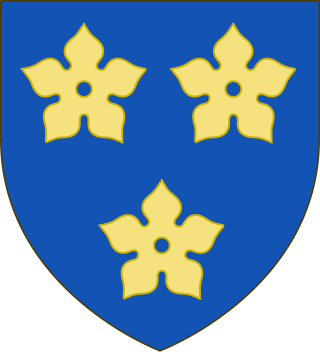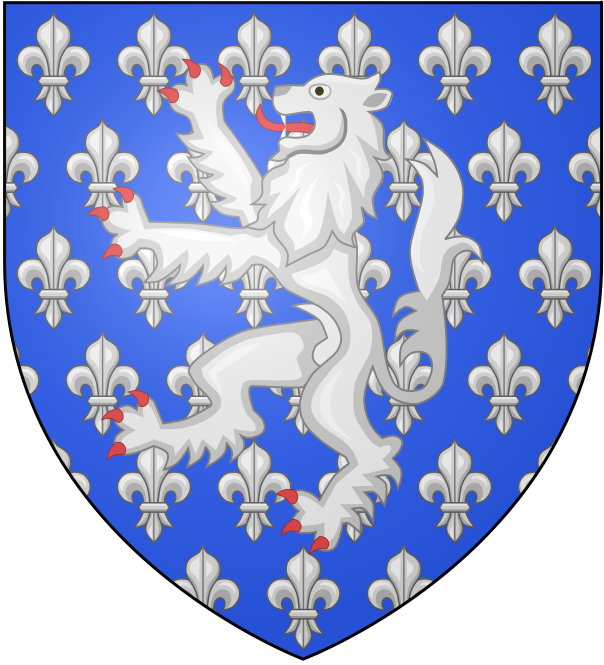The Peerage of Ireland consists of those titles of nobility created by the English monarchs in their capacity as Lord or King of Ireland, or later by monarchs of the United Kingdom of Great Britain and Ireland. It is one of the five divisions of Peerages in the United Kingdom. The creation of such titles came to an end in the 19th century. The ranks of the Irish peerage are duke, marquess, earl, viscount and baron. As of 2016, there were 135 titles in the Peerage of Ireland extant: two dukedoms, ten marquessates, 43 earldoms, 28 viscountcies, and 52 baronies. However, these titles have no official recognition in Ireland, with Article 40.2 of the Constitution of Ireland forbidding the state conferring titles of nobility and stating that an Irish citizen may not accept titles of nobility or honour except with the prior approval of the Irish government.

Earl of Warwick is one of the most prestigious titles in the peerages of the United Kingdom. The title has been created four times in English history, and the name refers to Warwick Castle and the town of Warwick.

Earl of Leicester is a title that has been created seven times. The first title was granted during the 12th century in the Peerage of England. The current title is in the Peerage of the United Kingdom and was created in 1837.

Earl of Radnor, of the County of Radnor, is a title which has been created twice. It was first created in the Peerage of England in 1679 for John Robartes, 2nd Baron Robartes, a notable political figure of the reign of Charles II. The earldom was created for a second time in the Peerage of Great Britain in 1765 for William Bouverie, 2nd Viscount Folkestone.

Earl of Powis (Powys) is a title that has been created three times. The first creation came in the Peerage of England in 1674 in favour of William Herbert, 3rd Baron Powis, a descendant of William Herbert, 1st Earl of Pembroke. In 1687, he was further honoured when he was made Marquess of Powis.

Viscount Galway is a title that has been created four times in the Peerage of Ireland. The first creation came in 1628 in favour of Richard Burke, 4th Earl of Clanricarde. He was made Earl of St Albans in the Peerage of England at the same time.

Viscount de Vesci, of Abbeyleix in the Queen's County, now called County Laois, is a title in the Peerage of Ireland. It was created in 1776 for Thomas Vesey, 2nd Baron Knapton and 3rd Baronet. The title Baron Knapton was created in the Peerage of Ireland in 1750 for the first Viscount's father, John Vesey, 2nd Baronet, who had earlier represented Newtownards in the Irish House of Commons. The baronetcy, of Abbeyleix in the Queen's County, was created in the Baronetage of Ireland on 28 September 1698 for the first Baron's father, Reverend Thomas Vesey, Bishop of Killaloe (1713–1714) and Bishop of Ossory (1714–1730).
Viscount Hampden is a title that has been created twice, once in the Peerage of Great Britain and once in the Peerage of the United Kingdom. The first creation came in the Peerage of Great Britain when the diplomat and politician Robert Hampden, 4th Baron Trevor, was created Viscount Hampden, of Great and Little Hampden in the County of Bedford on 14 June 1776. The title of Baron Trevor, of Bromham, had been created in the Peerage of Great Britain in 1712 for his father, the lawyer Sir Thomas Trevor. Both titles became extinct in 1824 on the death of the first Viscount's second son, the third Viscount.

Viscount De L'Isle, of Penshurst in the County of Kent, is a title in the Peerage of the United Kingdom. It was created in 1956 for William Sidney, 6th Baron de L'Isle and Dudley (1909–1991).

Baron Trevor is a title that has been created three times. It was created first in 1662 in the Peerage of Ireland along with the viscountcy of Dungannon. For information on this creation, which became extinct in 1706, see Viscount Dungannon.

Baron Hunsdon is a title that has been created three times.

The title of Viscount Lisle has been created six times in the Peerage of England. The first creation, on 30 October 1451, was for John Talbot, 1st Baron Lisle. Upon the death of his son Thomas at the Battle of Nibley Green in 1470, the viscountcy became extinct and the barony abeyant.

Earl of Londonderry is a title that has been created three times in the Peerage of Ireland. The first creation came in 1622 in favour of Thomas Ridgeway, 1st Baron Ridgeway, who served as Treasurer of Ireland and was involved in the colonisation of Ulster. He had already been created a Baronet, of Torrington in the County of Devon, in 1611, Lord Ridgeway, Baron of Gallen-Ridgeway, in the Peerage of Ireland, in 1616, and was made Viscount Gallen-Ridgeway at the same time as he was granted the earldom, also in the Peerage of Ireland. The titles became extinct on the death of his great-grandson, the fourth Earl, in 1714.

Earl of Clanricarde is a title that has been created twice in the Peerage of Ireland, first in 1543 and again in 1800. The former creation became extinct in 1916 while the 1800 creation is extant and held by the Marquess of Sligo since 1916.
The title of Baron Welles has been created three times. Its first creation was for Adam de Welles on 6 May 1299 in the Peerage of England by writ of summons. This creation was extinguished by attainder in 1469. The title was created a second time in the Peerage of England by writ of summons for Sir Richard Hastings on 15 November 1482 and became extinct on his death. The third creation was on 8 January 1781, in the Peerage of Ireland, for Thomas Knox, later Viscount Northland. It is now a subsidiary title of the Earl of Ranfurly.
Viscount Windsor is a title that has been created twice.

Baron Morley was a title in the peerage of England. On 29 December 1299 William Morley, lord of the manor of Morley Saint Botolph in Norfolk, was summoned to Parliament, regarded as the creation of a hereditary barony. At the death of the sixth baron in 1443, the title was inherited by his daughter Eleanor Morley, the wife of Sir William Lovel, who was summoned to parliament as Baron Morley in right of his wife and died in 1476, shortly before her. It was then inherited by their son Henry Lovel, following whose death in 1489 it came to his sister Alice Lovel, who was married to Henry Parker. The title was then held by her descendants in the Parker family until 1697 when, on the death of the fifteenth baron without children, the title came to an end.
There have been four baronies and one viscountcy created in the name of Lovel or Lovell.

The Holland family was a medieval-era English noble family. Many Hollands were Dukes, Earls, Knights and Barons in medieval England, and they played significant roles in the struggles for the crown in the fourteenth and fifteenth century.

Baron Bardolf or Bardolph was a title in the Peerage of England.










